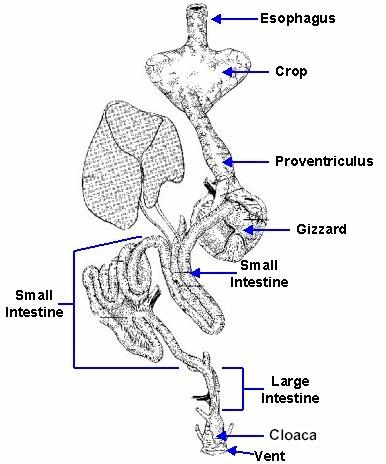
29 October 2010
Birds have the same basic internal equipment that we do but the location and shapes of their body parts are modified because they fly.
So here’s a puzzle. Teeth are heavy, so where are their teeth?
Millions of years ago the ancestors of birds had teeth but modern birds don’t have even a vestigial tooth. Yet they eat food that ought to be chewed: meat, nuts, and entire mice and fish swallowed whole.
Birds do indeed “chew” their food but not in their mouths. Teeth are heavy equipment for the front end of flying animals and if they had to escape suddenly while chewing a big meal, the food would add extra weight to their heads, a real challenge to flight.
Birds’ bodies have an elegant solution to these two problems. The chewing mechanism and main holding compartment are the same organ, the gizzard, located at the center of gravity under the wings.
The gizzard is a muscular stomach that breaks up food by grinding it with the grit birds eat to aid digestion. The gizzard grinds and turns the food among the grit, breaking it into smaller bits the same way we chew with our mouths.
As you can see from the diagram, the gizzard is the third digestive organ in most birds. The first is the crop, a bulge in the esophagus where food waits to be processed. The second is the glandular stomach or proventriculus where enzymes break down the food before passing it to the gizzard where it’s “chewed.”
So now you know. Birds’ teeth are on the inside.
(image of a bird’s digestive tract, linked from Fernbank Science Center in Atlanta, Georgia. Click on the image to read more about birds’ digestion.)